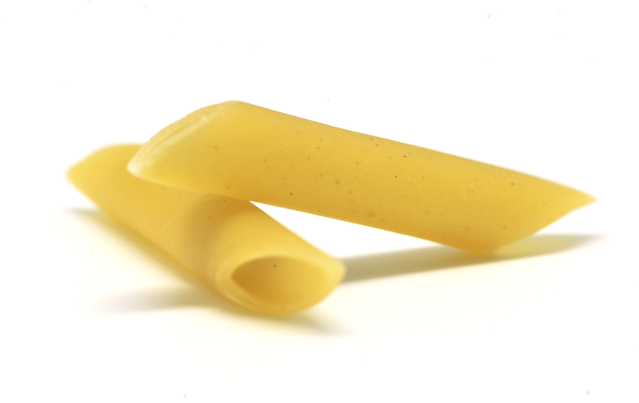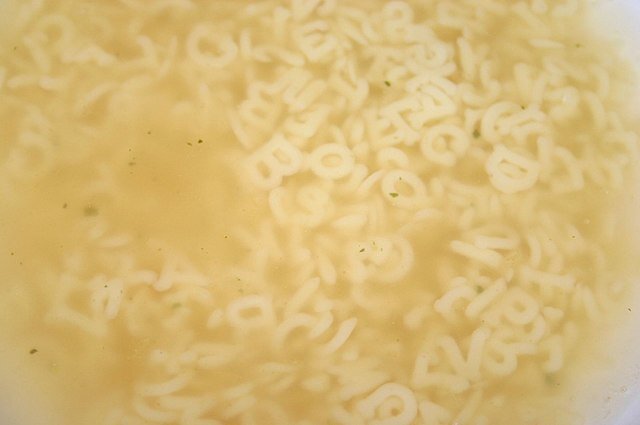I really can’t believe that I’m attempting this expose on the many shapes/types of pasta! Egad, what a huge subject!
And, all we’re talking about is flour and eggs, and/or water…all worked into different shapes…over 175 of them!
And why so many shapes? Well, I guess I have to say, ‘Why not!’. Or maybe, ‘Because it’s fun’. Or, how about, “I don’t have any idea!’.
“The pasta-type naming issue is a morass tangled up in a muddle sinking into a quagmire.”
Then, I have mixed emotions about getting into the nitty-gritty of what clings well to each shaped pasta. Yes, like wine pairings with food, there is the ‘proper’ coating/sauce for each type of pasta…thus the different shapes…but I’ll surely get into that. And, just what coating is ‘proper’ for each shape?…that depends on with whom you are speaking, or reading, just like with food-wine pairings.
Is this an Italian subject? Yes, most definitely. Let’s dive in!
THE SHAPE OF THINGS
Here are the very basic shapes of pasta that one might encounter: long & skinny or long & wide, shell, twisted, tubular or short-cut, stretched, itsy-bitsy, and filled/stuffed pastas. You can probably put in gnocchi as a different shaped pasta altogether, as it has distinctive ingredients for its preparation, e.g. potato is often used…its more like a dumpling.
Wikipedia has a nice list of pastas with photos.
Here are some examples of each, using common terms with which you might be familiar.
Long Pastas
These are like what you think of as spaghetti, of which there are many types…just head up to your grocery store to see that for yourself. They are made either by extruding them through a die, or by rolling them out and hand cutting them.
Here is a semi-comprehensive (is there such a thing as ‘semi-comprehensive’?) list of these ‘long’ pastas…and I’ll provide just a few photos.
NOTE: I’m going to be making a point with the next few paragraphs, so please bear with me.
PASTAS IN THE LONG CATEGORY: barbine (1), bavette (3), bigoli (1), bucatini (8), busiate, capellini (7), fedelini, ferrazzuoli (1), fettuccine (4) (I’ll explain why I’ve bolded fettuccine, below), fileja (6), linguine (5), lagane (2), lasagna (8), lasagnette, lasagnotte, maccheroni alla molinara, maccheroncini di campofilone, mafaide (9), matriciani, pappardelle (3), perciatelli (4), pici (3), pillus (1), rustiche, sagne ‘ncannulate, scialatelli, spaghetti (6), spaghetti alla chitarra (2), spaghettini (1), spaghettoni (1), stringozzi, su filindau, tagliatelle (15), taglierini (3), trenette, tripoline (1), vermicelli (1), ziti (5).
REGIONAL PASTA NAMES: That’s 32 names for for long pastas. But, those are the common names for the long and skinny pastas. But, guess what? There are regional names, also…the number of which is shown in the parenthesis following each name type above. I count over 100 names for the long and skinny pastas that are used regionally. Add the two together and there are 130 names for long and skinny pasta. Do we really need that many names for long, skinny mixtures of flour and eggs and/or water?
Here’s an example of the regional-names issue. I’ll use the well known Tagliatelle, as an example (that’s it in the bottom right of the group of photos just below).
REGIONAL NAMES FOR TAGLIATELLE PASTA SHAPE: tagliarelli, reginelle, fresine, nastri, fettuccelle, fettucce romane, fiadi, tagliolin, taglatelle smalzade, lesagnetes, bardele, fettuccine (again!?), pincinelle, tagghiarini, and taddarini (you should see all of the red-underlined-spell-checker warnings I’m looking at right now!).
So, ‘fettuccine’ in the regional names for tagliatelle?!…that alone is a completely separate type of long and skinny pasta as you can see above in the list of 32 long pastas, but it’s listed here as a regional version of tagliatelle. Go figure.
I’m not going to belabor the point of the pasta names (well, not any more, at least), and I’m not going to list them for the remaining pasta shapes. In my research, it is suggested that names are often created for marketing purposes And, as there are reportedly 34 different languages or dialects spoken in Italy, that is most likely the main reason for so many regional-name equivalents.
Churchill said of Russia that “It is a riddle wrapped in a mystery inside an enigma”. You can quote me in the future as I say that, “The pasta-type naming issue is a morass tangled up in a muddle sinking into a quagmire.”
PHOTOS OF LONG & SKINNY PASTA: In the first two photos (ziti and bucatini respectively), you will see holes in the long strands that can only be imparted with extrusion through a die. Buca means ‘hole’ in Italian, so this is where bucatini gets its name (the -tini diminutive would make it a small hole), as there is a hole all the way through each strand. Other strands have a square cross-section, while some are flat. Also, note the different colors of each pasta, which is related to the type of flour used in the creation of that pasta.
Tubular/Short Cut
Here we find cheese’s famous partner, macaroni. The short tubes of pasta might be smooth, or there may be grooves. They might be straight, or they may be curved. Some are spiraled and some look like wagon wheels. There is even a cute little bow tie for your pasta salad. There are 70 types of short, tubular pastas, with over 160 regional names associated with them.
Stretched or Shelled
These are usually small disks of pasta that are stretched on a board, and it is a small category with only 5 pasta shapes. Orecchiette, those little ear-shaped pastas are in this category. There are around 17 regional variations in naming.
Itsy-Bitsy
You will find these in soups, like minestrone. I use the term itsy-bitsy, but in Italian they are called ‘pastina’ (again, the -tina is a diminutive ending), or small pasta. There are 38 pasta shapes in the pastina category, with a plethora of regional shape names. The first of the six photos below is orzo, which has 24 regional names for that diminutive shape.
Filled
Enter Chef Boyardee and his canned ravioli…I remember it well. It’s been a long time since I’ve eaten that canned delicacy, and I’m glad of it. But yes, you will find ravioli in this category, as well as cannelloni (the first photo below) and tortelloni/tortellini. And, let’s not forget cappelli, shown below in the second photo…those being hand made by none other than your writer/host. There are 21 shapes named in this category, with Cannelloni itself owning 17 regional names, like ‘tagliati di zitoni’. Now, The Godfather movie wouldn’t be the same with the line, “Leave the gun, take the tagliati di zitoni”, would it? No, it wouldn’t.
Gnocchi
It’s just ‘kinda’ in the pasta category. Yes, it is usually made with flour and eggs, but there is most likely something else involved, like cheese, potato, breadcrumbs, cornmeal, herbs, cocoa, prunes, ricotta, spinach, and of course, the kitchen sink. They are actually more like dumplings, and they are usually cooked fresh, rather than in a dried form. BTW, they are ready to remove from the pot when they float.
MAKING PASTA
We’ve seen pasta being made in Italy in many places. It’s fun to watch it being made and then shaped into whatever meets one’s fancy.
Hand Made at a Ristorante
Here is a woman in a viewing window of a ristorante near Campo di Fiori in Rome, who appears to be making a fileja pasta (which could also be known as filleda, filateddhi, filatelli, fusilli avellinesi, maccaruni aru ferru, ricci di donna, depending on where one is in Italy). Note the well-floured surface on which she works. In the four photos below, here is what she’s doing (from top-left to bottom-right):
Cutting a rolled out and folded sheet of pasta into fettucine shaped long and skinny pasta.
Separating the cut strips.
Laying them out in preparation for twisty-rolling.
Using a stiff wire as a form (hard to see in the fourth photo), she rolls the flat pasta around the wire in a quick and fluid motion.
Here is what her final product might look like after the wire is slid out.
Hand Made With Our Own Hands
You may remember seeing my article titled, “Learning to Cook Italian”, where we joined my in-laws Leslie and Criag at a cooking class in Piemonte. Here are some photos from that experience, where you can see wife Ellen’s hands deftly working the pasta.
I’m inspired to produce an article soon on how to make your own pasta, with but a few of the 170 or so shapes.
Pairings by Pasta Shape
As crazy as it may seem, one is supposed to coat a particularly shaped pasta with a particular coating. I can get into elbow macaroni being coated with a few melted cheeses, but come on. But, I promised that I would work this into today’s article, so here goes.
Thin Long Noodles Like Spaghetti: You don’t want to inhibit wrapping these pastas around your fork, so keep it light…nothing heavier than a thin Bolognese. Use sauces like light cream or olive oil, add chopped fresh herbs, diced tomatoes, crumbled crisp pancetta. And light seafood works well.
Long Tube Pastas (like ziti and bucatini): Since they have a long hole through the pasta, use thinner, loose sauces, so that the sauce can run down the center for more flavor in each bite.
Flat Long Pastas: Due to the large surface area, you can use heavier, richer sauces. The wider the pasta, the heavier the sauce. Pappardelle: use a rich, meaty sauce, like ragù, Bolognese, mushrooms, or a chunky tomato sauce.. Fettuccine: use a simple cream sauce like Alfredo.
Short Tube Pasta: These are super versatile shapes that you’ll even use in casseroles . The bigger the hole, the heavier/chunkier the sauce. When the tubes have ridges, a pesto will find it easier to well-coat this pasta shape.
Twisted Pastas: The unique twisty shape encourages pesto, crumbled meat, and sauces to hang around in there.
Small Pastina/Soup Pastas: These tiny varieties are best served in soups, stews, or broth. They also go well in a pasta salad.
Filled Pastas: You went to a lot of trouble to get a tasty filling stuffed into these pastas, so lets don’t overwhelm them with the coating. Try a light butter- or oil-based sauce. We like to brown up some butter with a bit of sage…yummm.
Gnocchi: Try a nice creamy sauce, or a cheesy-creamy sauce, or a brown-butter sauce. It’s gonna be good!
OK, after spending time putting the pairings together, I guess that most of it makes some sense. However, I never ran across anything involving meatballs. I like meatballs. Now I’m stuck, not knowing what to do. Using my own judgement, I’ll be pairing them with long, skinny pastas, whichever of the 32 or so is readily available.
Closing Arguments
I know that this was a lot to digest (no pun intended). But again, it seems like much ado about just a little bit of flour and eggs, and/or water.
If you are purchasing your pasta at your local grocery, then you are limited to what is available there, and it won’t be 170 different shapes. Go with what is available and enjoy your time cooking, and then eating. Add some wine to the picture, right?
If you purchase pasta at a specialty store that has a large inventory, then use the guidelines above…or use your common sense!
If you order on-line, you will have a wealth of choices…but then, you will have plenty of time to think about the appropriate coating as you wait a couple of days for delivery. Unless of course you subscribe to Amazon-Super-Duper-Primo-Instant-Tele-Transportation, in which case you’ll have to think faster.
A Bit of Charming Fun!
But now, for a bit of charming fun! I doubt that you’ve ever heard of Pasta Grannies…but, now that you have, you’ll be hooked if you visit the You Tube site. It’s mostly octogenarians-to-centenarians making pasta as they were taught by their own grannies. They are oh, so charming. These beautiful women create pasta in all shapes and sizes in their own kitchens, all by hand.
See over 300 grannies busily making pasta by hand on the You Tube channel…take a look here.
You can get a short introduction to the types of flour used by the grannies by clicking here.
There are short snippets of their tireless working on Instagram here.
Try it…you’ll like it…and you will get inspiration for making your own, handmade pastas.
And speaking of that, in the not-to-distant future, I’ll be writing about making your own pasta at home, which is what we do.
And Finally…Some Pasta Drama!
From oldsters to youngsters. What kid doesn’t like pasta…right?! Well, here’s one. This bit of drama unfolded before our very eyes at the same ristorante where the woman was making hand rolled pasta, above.
So, who wonthis battle? When the bread arrived at our table, I suddenly lost interest as my own bread-and-olive-oil drama began. Sorry to leave you hanging like that.
So, there you have the many shapes of pasta…and I’m guessing that there are a good many more than shown or described, above. We’ll be making some pasta together soon. But, in the meantime…
Ciao for now,
Steve































































